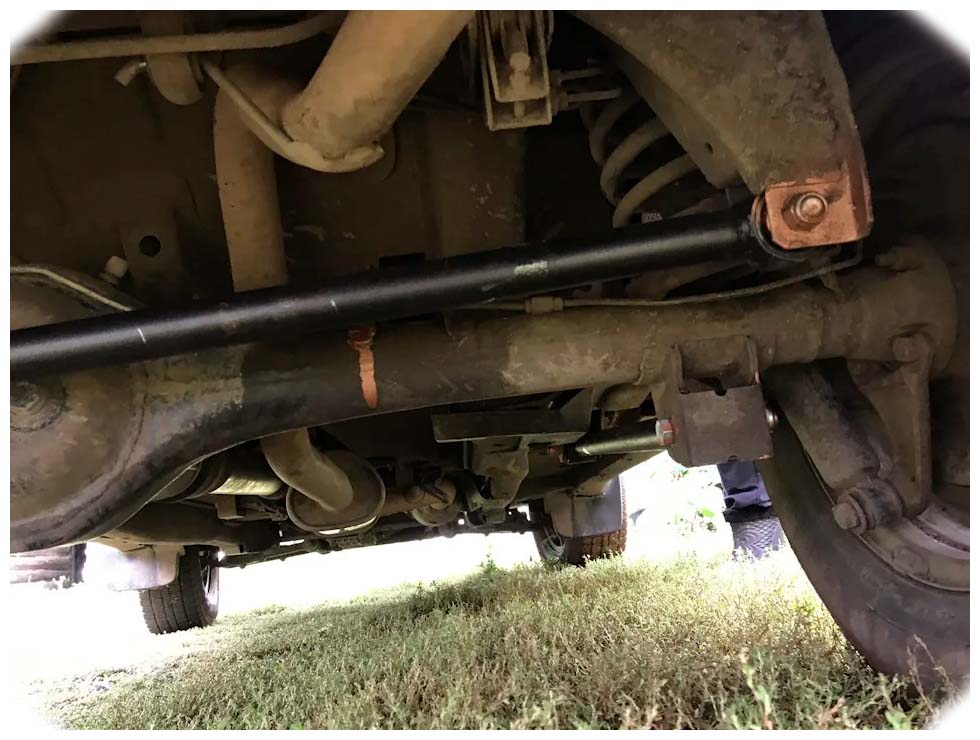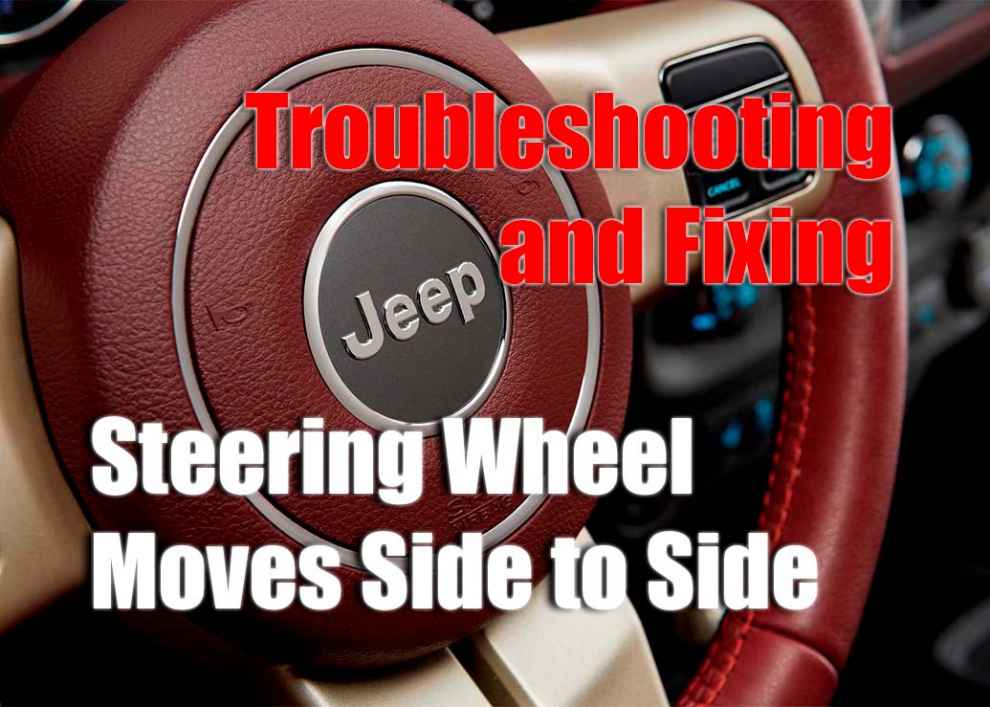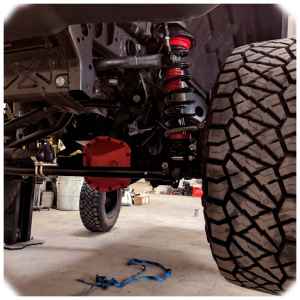Does your Jeep’s steering wheel move from side to side when you turn it? You’re not alone. This problem is common in Jeeps and can be caused by many issues, including misaligned front-end components, worn or damaged tie rods, loose steering column, suspension problems, wheel balance problems, and tires with uneven wear. In this article, we’ll review potential causes of why your Jeep is experiencing a side-to-side steering wheel movement, along with possible remedies to improve performance.
Possible Causes for a Steering Wheel Moves Side to Side in Jeep
Before you begin troubleshooting, it is important to understand what could be causing your Jeep’s steering wheel to move from side to side. Here are some of the most common culprits:
Misaligned front-end components: Misalignment of any element within the front end can cause excessive movement when turning. This includes improper alignment of tie rods, camber settings out of specification, or loose steering column connections.

Loose steering column: A loose steering column can lead to considerable play in the wheel when cornering or maneuvering around curves in the road. It may also result in difficulty in controlling the car.
Suspension issues: Suspension components such as struts, shocks, and coil springs can become worn or damaged over time. They may no longer be able to effectively absorb road bumps and irregularities which could lead to steering wheel movement while driving.
Wheel balance problems: An unbalanced wheel can cause vibration, noise, and steering wheel movement when turning corners or driving over uneven surfaces. Uneven wear on the tires can also indicate an underlying problem with wheel balancing.
Tires with uneven wear: Unevenly worn tires are a common sign of misalignment or other problems within your vehicle’s suspension system. This type of wear can result in excessive movement in the wheel when cornering or maneuvering around curves in the road.
Diagnostic Process
The first step in diagnosing the cause of your Jeep’s side-to-side steering wheel movement is a thorough visual inspection of the vehicle’s steering components. Take the time to carefully examine the tie rods, struts, shocks, coil springs, and other suspension components for any visible signs of wear or damage. Pay close attention to any loose bolts or nuts contributing to excessive wheel movement. Identifying any potential issues during this inspection will provide valuable insights into the source of the problem.
Once you have completed the visual inspection, assessing your Jeep’s wheel alignment is crucial. Confirm that the camber settings are within the specified range and ensure that both sides of the vehicle are aligned correctly. Misalignment can often lead to steering instability and the side-to-side movement of the steering wheel. If misalignment issues are detected, adjusting and correcting them before proceeding with the diagnostic process is important.
The next step in the diagnostic process involves verifying the performance of your Jeep’s suspension system. To do this, take your vehicle for a drive around an obstacle course or a designated test track. Pay close attention to how well the wheels and tires absorb road bumps and irregularities, particularly while cornering or maneuvering around curves. Observe any excessive bouncing or instability, as these can indicate potential suspension problems that may contribute to the side-to-side steering wheel movement.
Finally, it is essential to assess the condition of your tires. Carefully examine the tread patterns for any signs of uneven wear or splitting between tread blocks. Uneven wear, particularly on one side or across multiple tires on different axles, can significantly impact the stability and smoothness of your Jeep’s steering. If uneven wear is detected, consider having your tires balanced or rotated to ensure a more even distribution of wear and maximize their performance.
Troubleshooting Steps
Once you have completed the diagnostic process, it is time to start troubleshooting the possible causes of your Jeep’s side-to-side steering wheel movement. Here are some steps you can take to resolve the issue:
-
Step 1
Checking for Loose Bolts and Nuts: Start by checking all bolts and nuts that connect components within the front end of your Jeep. Make sure they are all tightened securely, and check for any signs of wear or damage. Replace any worn parts with new ones from a reliable source if necessary. -
Step 2
Realigning the Steering Wheel: If your Jeep’s steering alignment is out of specification, realigning it will help reduce excessive movement when turning corners or maneuvering around curves in the road. That requires accessing and adjusting several components within the front end of your vehicle. If you feel uncomfortable doing this, seek professional help from a qualified mechanic. -
Step 3
Inspecting Steering Linkage: Check all steering linkage components, such as ball joints, tie rods, bushings, and universal joints, for signs of wear or damage that could be causing excessive movement when turning. Replace any worn parts with new ones from a reliable source if necessary. -
Step 4
Examining Suspension Components: Inspect all suspension components, such as struts, shocks, and coil springs, for signs of wear or damage that could be causing excessive movement when cornering or maneuvering around curves in the road. Replace any worn parts with new ones from a reliable source. -
Step 5
Balancing and Rotating Tires: Uneven wear on tires can cause steering wheel movement while driving. To resolve this issue, balance and rotate your tires every six months to ensure they are evenly distributed across all four wheels. This will help improve handling performance and reduce unnecessary vibration and noise while driving.
Conclusion
A side-to-side steering wheel movement in your Jeep is likely caused by misaligned front-end components, worn or damaged tie rods, loose steering column connections, suspension issues, wheel balance problems, or tires with uneven wear. Identifying the root cause of this problem requires some troubleshooting; however, by following the steps outlined in this article, you can successfully diagnose and fix the issue yourself. Once you have identified and resolved the problem, you can return safely and enjoy a smooth driving experience.

 Step 4
Step 4
Add Comment